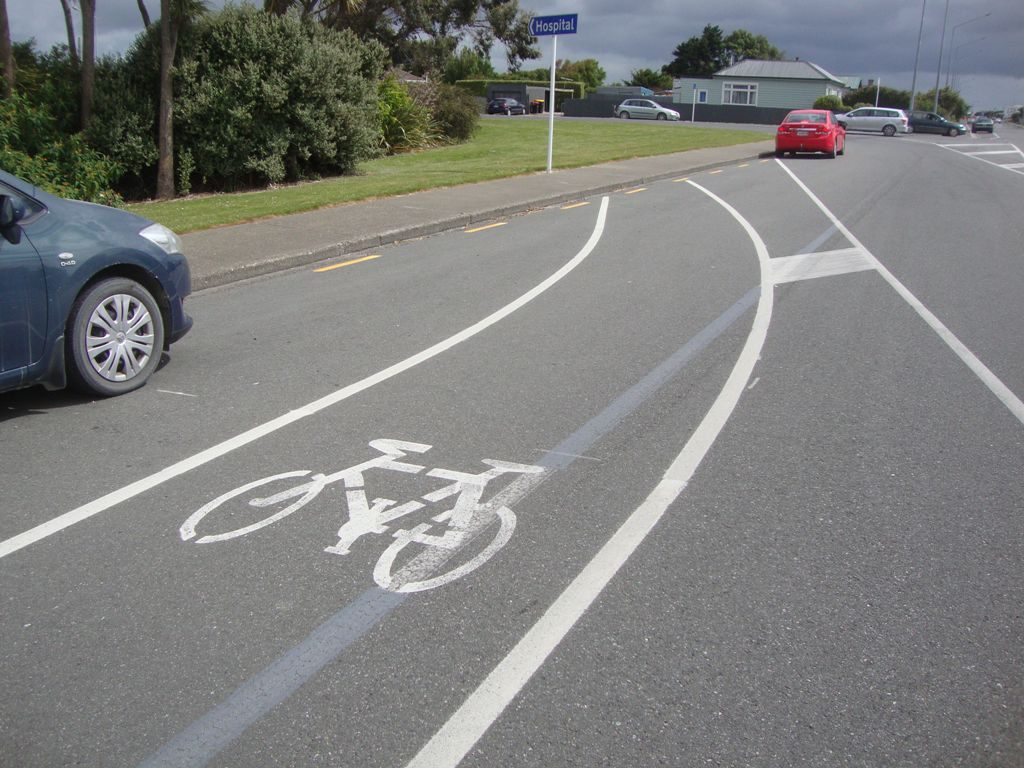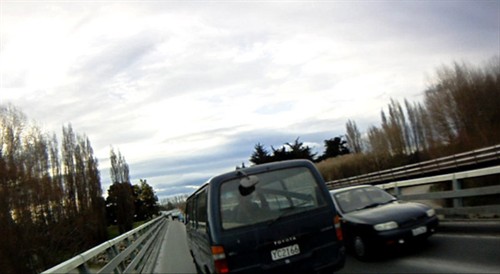As well as topical info of the day, at Cycling in Chch we also like to provide useful ongoing guidance that will prove useful whenever you will need it. When it comes to cycling, safety and crashes are a big concern, so back in Dec 2012 it seemed like a helpful topic to write a post on for when you come unstuck. Still, we hope that you never actually need it…
OK, so you’ve had a crash while out riding, whether with a car or some other hazard. Or maybe it was just a near-miss but it’s not the first time you’ve had problems at that site. Or perhaps some idiot driver has decided to do something incredibly dangerous and nearly cause a prang with you?

It can all be very scary, painful, annoying, and maybe even enough to make some people rethink their choice to cycle. But if something needs to be fixed to prevent future incidents, how will the relevant authorities be able to do something if they don’t know about the problem in the first place? I’ve already told you how to report maintenance-related problems, now here’s some hints about reporting safety issues.
- Although all motor-vehicle collisions on our roads should be reported to the Police, many involving cyclists aren’t. It is estimated that only 10% of cycle collisions get reported. If crashes aren’t reported then they can’t end up in CAS, the Crash Analysis System database used to identify road safety blackspots. So the message is simple: make sure you report any collision with a motor vehicle to the Police, especially if you are injured in any way (If you are seriously injured, someone should ring 111).
- Christchurch City Council used to have a Cycle Hazard Incident Report (CHIRP) system, a simple method of capturing information on cycle collisions and hazards to cycling that would normally go unreported. Many unreported incidents occur off-road on pathways or don’t involve a motor vehicle, so this provided a useful additional dataset. Unfortunately this is no longer available, but you could use the standard Council reporting system to register particular locations where you’ve encountered problems (but it is recommended that you contact Police directly instead for serious motor vehicle incidents). You can also use the Council’s new SnapSendSolve app to report things on the fly too.

- Had a near miss, thanks to some dodgy driving behaviour? Even if there was no collision, for lesser transgressions you can submit a Police Community Roadwatch report; the police send the driver a warning letter saying they have noted this incident and confirm this by letter to you. The police will also store the report and it is available if they decide to prosecute or to deal with future incidents. Note that, to report someone this way, you must be able to identify the vehicle (i.e. get their licence plate number and a basic description of the vehicle) and also note the location and time of the incident. Forms are available from your local police station, or complete an online submission, or download from their website.

- If you have a serious complaint against a driver for careless/dangerous driving you may want to file charges with Police and request a prosecution – visit your local Police station and lay a complaint. If you take this approach they will ask you for a statement and you must also be prepared to be called as a witness.
- Alternatively, if a commercial vehicle was involved, call/email/write to the company concerned, asking for a response. Most are very good about dealing with this kind of behaviour.
- If the particular type of driving behaviour is common to many motorists, you may want to approach your local Council road safety coordinator; they may be able to undertake a road safety education/enforcement campaign. Or you could contact Spokes Canterbury, the local cycling advocacy group, and see how they can help to get some local action.
- Not surprisingly, the Police can only go so far without evidence in addition to your word alone. Any photographic or video evidence you can get might be handy (another reason to keep that smartphone handy), and see if there are any people around who could act as a witness. You might want to even consider getting a helmet or bike-mounted video camera – there seem to be a growing number of riders adding these to their gear.
Despite the media hype, cycling is still generally a safe activity for the most part. But it’s important to know what your options are if things untoward do happen.
Have you reported dangerous locations or drivers before?

We recently biked over the Anzac Bridge and Pages going to New Brighton couldn’t believe the short time to cross road just about got run over….
Useful stuff, thank you.
Where was that second photo taken?
I don’t actually know, although I’m pretty sure it’s not Christchurch…
I have reported unsafe driving a number of times. I have never received a confirmation that the driver was warned. I have twice reported threatening and wreckless driving to the police to press charges, both times police refused to do anything about it. I should add that as part of my legal clerkship, I have prosecuted drivers in other jurisdictions in court.
Thanks LennyBoy, do you know why the CHIRP system was stopped? I think it would be a useful tool to ascertain how many cycle/vehicle related accidents there are per day and where these are happening. I was hit by a car (in a cyclelane) 3 weeks ago. I was in a state of shock did’nt get the guys number/name even though he got mine and never heard back again. The ambo crew told me I was the 4th cyclist of the day. This morning along Memorial Ave (the valley of death for cyclists) I saw another poor bugger, who had just been hiy by a motorist, being helped into the ambulance.
We really need a system where we can log these incidents so we can build a statistical picture of what is going on out there.
Theoretically, you can use Sensibel (https://map.sensibel.org/) to record these things. In practice, it does not work for me. The little gadget does not work with my phone, and the website never loads after signing up.